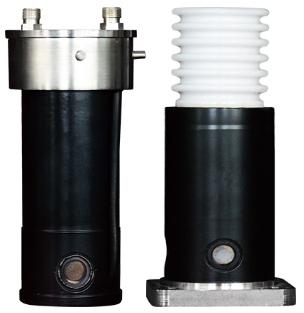
- Home
- >
News
X-ray tubes device used to generate X-rays, widely used in laboratory analytical instruments such as X-ray diffractometers, such as medical imaging, industrial testing, and scientific research. In the industrial field, they are used to detect defects inside materials, such as welds, cracks, etc. In scientific research, X-ray tubes are used to study the structure and properties of substances.
X-ray tubes specifically designed for analytical instruments: corrugated ceramic tubes, cermet tube , and glass tubes ,suitable for various models of XRD, XRF, crystal analyzers, and orientation instruments at home and abroad. X-ray tubes technical parameter: 1. Optional target material types: Cu, Co, Fe, Cr, Mo, Ti, W, etc 2. Focus type: 0.2 × 12mm² or 1 × 10mm² or 0.4 × 14mm² (fine focus)
X-ray tubes specifically designed for analytical instruments: 1. There are various types of target materials: different target materials can be selected according to different analysis needs, such as tungsten, copper, cobalt, iron, chromium, molybdenum, titanium, etc. These target materials can generate X-rays with different characteristics to adapt to the analysis of various substances. 2. Rich focus types: There are multiple focus types to choose from, such as fine focus, which can meet the testing requirements of different resolutions and accuracies. For example, fine focal points of 0.2 × 12mm ², 1 × 10mm ², or 0.4 × 14mm ² can help improve the accuracy and precision of analysis. 3. High output power: A high output power can ensure that the X-ray tube has sufficient energy to excite the sample during operation, thereby obtaining clear analysis results. The output power of some specialized X-ray tubes can reach 2.4kW or 2.7kW. 4. Special structural materials: corrugated ceramic tubes, metal ceramic tubes, glass tubes and other materials are used, which have good high temperature resistance, corrosion resistance and radiation resistance, ensuring stable operation of X-ray tubes in complex working environments. At the same time, these materials also help improve the heat dissipation performance of X-ray tubes and extend their service life. 5. Customized services: Customers can customize according to their specific needs, including the design, configuration, and anode materials of the radiation tube, to meet specific analysis requirements. 6. High reliability: The X-ray tubes used by Dandong Tongda Technology Co., Ltd. ensure a reliable supply of X-ray tubes, ensuring the continuous provision of high-quality X-ray tubes during the instrument's service life and reducing instrument downtime caused by tube failures. 7. Widely applicable: Suitable for various models of XRD (X-ray diffractometer), XRF (X-ray fluorescence spectrometer), crystal analyzer, orientation analyzer and other analytical instruments at home and abroad, as well as industrial fields such as non-destructive testing, inspection, measurement, etc. In summary, X-ray tubes specifically designed for analytical instruments have the characteristics of diverse target materials, rich focal points, high power, special structural materials, customizability, high reliability, and wide applications. These features enable them to meet the analysis needs of various complex substances and are widely used in scientific research, industry, and other fields.
Dandong Tongda Technology Co., Ltd. is a professional enterprise that produces X-ray products. Its main product is X-ray analysis instruments, and in 2013, it became the project undertaker for the National Major Scientific Instrument and Equipment Development Special X-ray Single Crystal Diffraction Instrument of the Ministry of Science and Technology of China. Our company adheres to the principles of customer first, product first, and service first, insists on people-oriented, and has a strong technology team. We are committed to providing users with the highest quality high-tech products with advanced technology, and providing strong support and services to users with efficient technical consulting and after-sales service institutions.
The TD series X-ray crystal analyzer is a large-scale analytical instrument used to study the internal microstructure of materials. It is mainly used for single product orientation, defect inspection, determination of lattice parameters, determination of residual stresses, study of the structure of plates and rods, and investigation of the structure of unknown substances and single crystal dislocations.
The high-precision multifunctional angle measuring instrument of Tongda Technology can not only measure conventional powder samples, but also test liquid samples, colloidal samples, viscous samples, loose powders, and large solid samples.
Recently, the Ministry of Science and Technology announced the list of the second batch of key projects under the 2023 National key research and Development Plan "Basic scientific research Conditions and major scientific instruments and equipment research and development".
Scientists led by NTU Singapore have developed and simulated a new energy-saving method that can produce highly focused and finely controlled X-rays that are a thousand times stronger than conventional methods.
The X-ray intensity of nondestructive testing at a point in space is the sum of the number of photons and the energy product over a unit area perpendicular to the X-ray propagation direction in unit time.
In X-ray analysis, an instrument used to measure the Angle between an incident X-ray beam and a diffracted X-ray beam. The diffractometer automatically maps the variation of the diffraction intensity with the 2θ Angle.
Polycrystalline X-ray diffractometer, also known as powder diffractometer, is usually used to measure powder, polycrystalline metal or polymer bulk materials.












